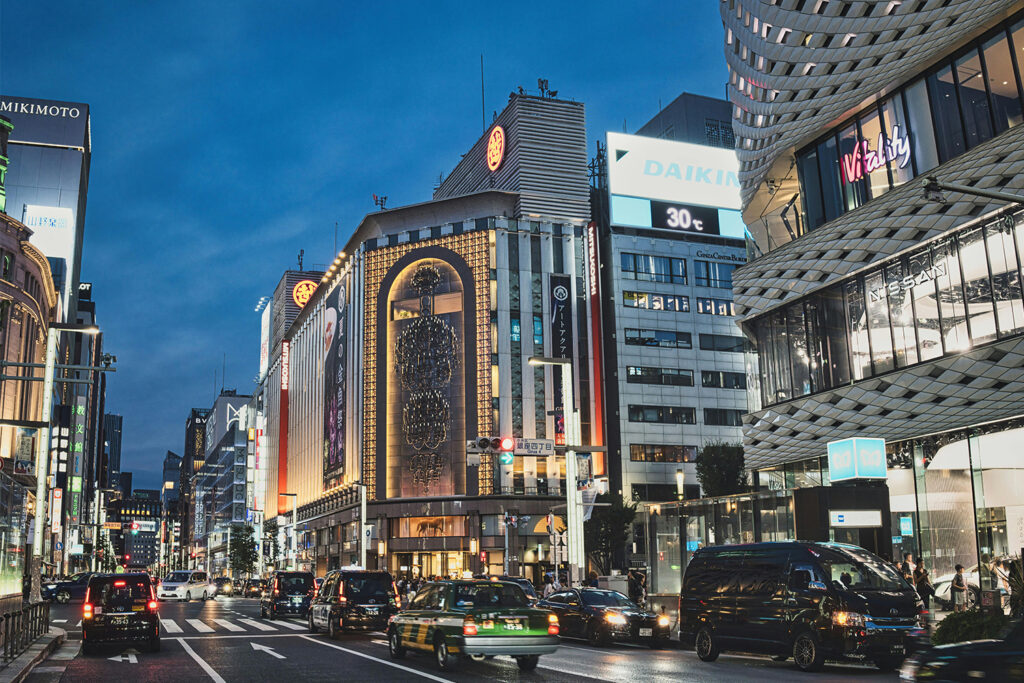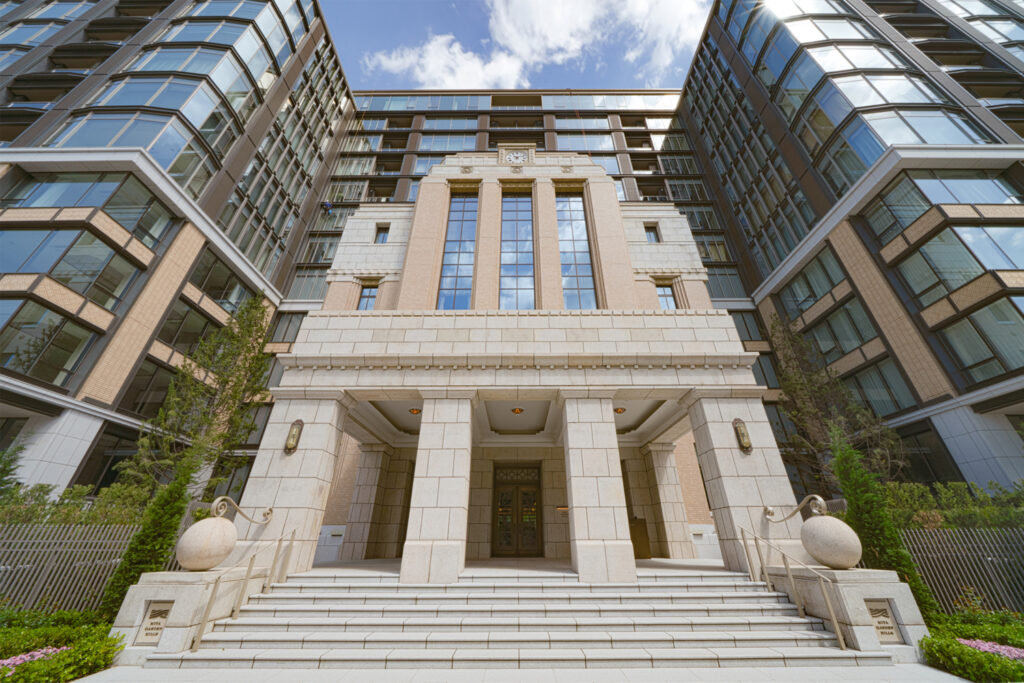This article was originally published in Housing Japan Magazine, Spring 2020.
PROPERTY Interview with Mori Nishimura, Sales Division, Housing Japan
Tokyo’s property market in 2020 would have been very bullish had the Olympics been held, but the Covid-19 pandemic has upended that scenario. The unfortunate delay of the Olympics has been overshadowed by the complete shutdown of inbound tourism and a state of emergency in April and May. The resultant economic impact is only starting to play out.
Although it is still very early to predict the long-term impact of the virus, it is likely that buyers will find residential and commercial acquisition opportunities. So far, sectors have been affected variously. The hotel sector has seen an immediate negative impact from the collapse in demand, and we will likely see non-performing assets come on to the market as early as summer 2020. Investors should use this opportunity to acquire prime assets or assets at significantly reduced prices.

Alfie Goodrich (AG): Nishimura-san, setting Covid-19 aside, could you describe some of the major trends we have seen in the Tokyo residential market recently?
Nishimura Mori (NM): Since Tokyo won its bid to host the 2020 Olympics, prices for new apartments and condominiums have been rising. Together with the government’s easing of monetary policy and consistently low interest rates, this has created a prosperous marketplace in Tokyo, especially.
Over the past couple of years, we’ve seen shortages of construction materials and labour because of events like the 2019 Rugby World Cup and the Olympics. Both shortages have caused construction costs to rise. Competition for land is also quite fierce. According to the chika koji (Commercial Government Assessed Land Values) price report, land prices are currently rising at levels not seen for almost 25 years, although this applies more to the commercial sector than the residential one.
Developers have been scrambling to find land, building but not selling aggressively, meaning they have plenty of stock but are trying to avoid an oversupply of units. One reason is the high price of new apartments at the moment.
Sales of new apartments are slowly decreasing, and buyers are flowing to the second-hand market. For the first time, the market has more second-hand properties than new. Yet developers aren’t in a rush. They believe the price of land and the price of construction aren’t going to decrease anytime soon, so they continue to acquire land and build on it. Sumitomo Realty & Development, in particular, have a very large apartment stock in Tokyo but aren’t particularly in a rush to sell.
Another trend is that major developers such as Sumitomo, Mitsui, Mitsubishi, Daiwa and those based abroad, notably Pembroke & Grosvenor, are entering the “refurbish and sell” market. I have had many acquisition specialists tell me they are having an extremely difficult time acquiring developable land, and they don’t know what to do. In other words, the developers’ margin for new build development has diminished. They are turning to refurbishing. Though once not a business for them, it is now something they are going to have to learn to do.

AG: What are the most significant investments from overseas in Japan’s residential property sector right now?
NM: We’ve just had an announcement by Blackstone which is very significant. They have paid a record price—around $2.7bn—to buy back a multifamily portfolio of property that they sold to Anbang in 2017. Most of the folio consists of multi-storey residential blocks across Tokyo and Osaka. Over the past two years, we’ve seen Blackstone deploying capital from their $7.1bn Asia Real Estate Fund II. Their buyback of the Anbang folio is significant for the Japan market.
Blackstone is certainly one to watch in both residential and commercial property. Another would be Starwood, which has a very mixed and balanced portfolio, with a lot of residential property and hotels. Starwood is definitely a company to watch, as they recently re-opened their Tokyo office—in December 2019—after closing it in the early 2010s.
AG: How is the commercial property sector affecting the residential property sector?
NM: Well, the two sectors have traditionally been connected. More offices mean more workers, and they all need somewhere to live. It will be interesting to see how Covid-19 impacts the office market.
Many staff and firms have now experienced working from home and, even after the crisis, it is likely that more people and businesses will opt for the work-from-home model. This could have a negative impact on office demand. It is hard to know yet how big that impact might be.
Another potential negative influence on office demand is the co-working business model. It is industry knowledge that the marginal demand for office space over the past couple of years is the result of the rapid expansion of WeWork and other co-working space providers. This model is under pressure now because of Covid-19 and the financial health of WeWork. The expected drop in demand is likely to be a drag on the office market in the medium term.

AG: Tell us a little about the rise of the second-hand property sector.
MN: Japan has traditionally operated a “scrap and build” approach to development. This has nothing to do with the quality of buildings, as well-built wooden homes in Japan can last for 100 years. It has more to do with the real estate laws in Japan that have kept the scrap and build tradition going.
In Japan, the seller is generally liable for any “hidden” defects found after selling the house. Even if there is a clause stating that the seller is liable for defects, the seller may not have the funds for repair as they generally have used up their savings in purchasing their next home. Therefore, when considering a second-hand home, the buyer is left without any suitable “insurance.” This situation scares people away from the second-hand market.
Understandably, the process is also stressful for the seller. Therefore, it is common for people to simply tear down the home and sell the land (in the case of single-family homes).
However, with a growing number of vacant homes and scarce land in CBD areas, in particular central Tokyo, the second-hand market is now required to be more attractive in order to solve these issues. To aid this, the government has been moving swiftly to create a more liquid, transparent and less hassle-free second-hand market and a system of home inspections.
From April 2018, brokers handling sales of homes have been obliged to ask the seller and buyer whether either will conduct inspections (building condition surveys) of deterioration, such as cracks and leaks of the exterior. Obviously, this won’t change singlehandedly the second-hand market, but it is a small step in the right direction.
AG: How else is central government helping the housing market, particularly in the area of used and refurbished housing?
NM: The Ministry of Land, Infrastructure, Transport and Tourism is planning to give public IDs to second-hand homes sometime this year and start a system to record information such as transaction prices. It can be difficult to track past transaction prices of real estate in the current market as not all transactions are obliged to be recorded.
We’re also seeing the emergence of lower interest rates for refurbished properties. If a property meets certain requirements, such as being earthquake resistant or barrier-free or having improved insulation, purchasers will be able to obtain loans (Flat 35 Loans) at low interest rates.
Given how the increasing number of vacant houses has become a problem for cities, the government will provide policy support to make it easier for existing homes to be traded. Flat 35 Loans are mortgages with fixed interest rates for up to 35 years.
Most conventional bank loans only have fixed interest rates for the first 10 years, after which they become variable. These new type of loans and new approach to refurbished housing from government are two very significant recent developments.

AG: Is the increased focus on refurbishing older properties confined to the everyday buyer or are development companies looking to add this sort of stock to their portfolios?
NM: Luxury residential developers are also moving towards the second-hand trend. Not only is it becoming more the norm for private buyers to purchase second-hand homes, developers are doing so, too. They’ve been having a difficult time finding land, and it can be an extremely convoluted and lengthy process to tear down older buildings as 80% of residents must agree on the demolition.
A good example of a recent and successful refurbishment project in central Tokyo is Hikawa Gardens, Akasaka, by Pembroke. Pembroke acquired the land and developed an apartment building in the early 2000s. After more than a decade of highly successful operation as a rental, Pembroke strategically removed the tenants, freeing it up for refurbishment.
The building was successfully and creatively refurbished as for-sale apartments, and sales have been brisk. The Tokyu Land Corporation is also seeing success with redevelopment projects, particularly their recent project Majes Tower Roppongi, which was also previously a rental-only apartment. The premium units on the top three floors (25–27F) have sold for ¥8-9m per tsubo (approximately 3.3 square metres).
For more property market information, property listings and real estate market news, visit our blog












